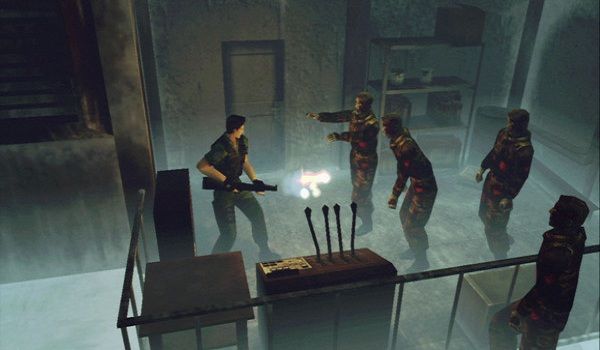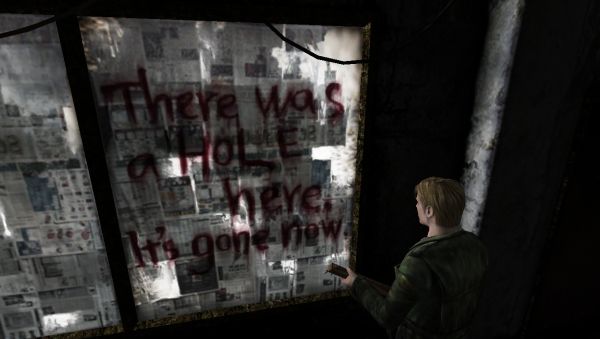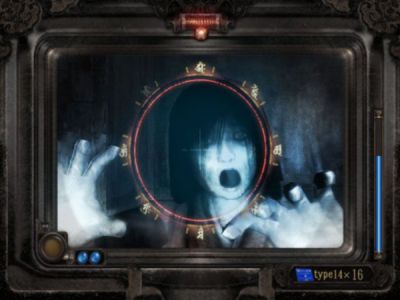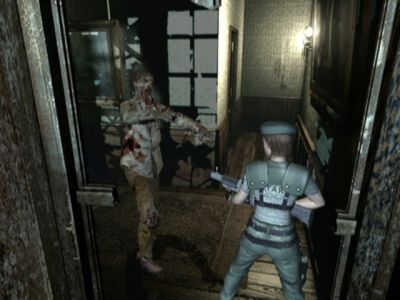
We’ve all been scared at one time or another. While “normal” people may try to avoid it at all costs, the rest of us actively seek out that primitive, guttural thrill. Horror movies do this well enough, but why bother watching when you can participate? There’s nothing like a good survival horror game, from Dead Space to Alien: isolation — but diehard fear junkies know the genre began much earlier. If that’s news to you, it’s okay! Just sit down and quiet yourselves, boys and girls, because class is in session.
After looking back at the birth of survival horror, the rise in popularity, and a huge wave of sequels, today, we’ll cover the next chapter in the genre’s evolution — one some would even describe as the death of true survival horror video games.

Make no mistake, the huge wave of sequels didn’t come crashing to a sudden end upon Silent Hill’s release. Resident Evil: Code Veronica was proof enough, releasing in February 2000 for the Sega Dreamcast. Originally intended to be the third game in the “mainline” Resident Evil series, Code Veronica’s title was decided upon when a contractual agreement prevented Capcom from releasing a numbered entry on a non-PlayStation console. Thus, Resident Evil 3: Nemesis was promoted from side story to the main series, and Code Veronica was doomed to be forever misidentified as an unimportant spin-off for eternity.
Ironically, it may be the most important entry in the series, as it sees Albert Wesker (the villain of the original Resident Evil) revived with incredible superhuman strength and speed. It also shows the Redfield siblings, Claire and Chris, continue their crusade against Umbrella Corporation as playable characters in fully 3D environments… a first for the series. This led to Chris and Wesker’s feud being cemented, a key plot point that would continue in future games.
Code Veronica’s gameplay was mostly unchanged from previous RE games, though the lack of pre-rendered backgrounds meant the camera wasn’t always glued in place. The camera was now capable of panning across large spaces, and even followed behind the player in several instances. The sequel also introduced dual-wielded firearms, allowing players to shoot enemies approaching from two different directions. Sadly, this feature never returned.
Evil Dead: Hail to the King, based on Sam Raimi’s B-movie franchise, dropped in December 2000 for the PlayStation and Sega Dreamcast, and 2001 for PC. It had static camera angles, tank-like controls, and scattered puzzles that were neither clever nor fun to solve. Poorly made and notorious for its ridiculous difficulty, this game is notable only because it was a licensed horror movie property trying to mimic Resident Evil… and failed spectacularly at it.
Speaking of Resident Evil clones, Alone in the Dark: The New Nightmare fit nicely into that category. Serving as the fourth entry in the series, developer Darkworks wanted to ride the coattails of Capcom’s success- which is pretty funny, considering the first RE drew heavy inspiration from the original Alone in the Dark. Released in May 2001 for PC, PlayStation, PlayStation 2, and Dreamcast, The New Nightmare effectively rebooted the series.
It starred a new, more trigger-happy iteration of longtime protagonist Edward Carnby. Armed with a rather ridiculous dual-cylinder revolver from the start, Edward’s story was a monster-blasting action fest compared to its slower-paced, more methodical predecessors. It would probably be a fine game on it own merits… if not for the fact that its plentiful enemies respawned upon re-entering rooms and areas- a major design flaw in a game with limited ammunition.
Meanwhile, a second playable character – Aline Cedrac – was also available, and she even starts out in an entirely different area from Edward. Aline’s story is much more puzzle-based and less reliant on combat, though my main complaint with the game still carries through here.

While we’re talking about sequels, Silent Hill received its first in 2001 for PlayStation 2 and Xbox.Silent Hill 2 not only continued on the path of psychological horror, but expanded upon it greatly while carrying players through James Sunderland’s tragic tale. Considered by many to be the best in the series, it kept players off balance with bizarre imagery and unsettling moments of sexuality — many of which were caused by the villainous Red Pyramid (AKA Pyramid Head). This creature would eventually go on to become a kind of mascot for the series, appearing in the live-action movie adaptation as well as later SH games. Silent Hill 2 also introduced Robbie the Rabbit to the series- an unsettling easter egg that would even find its way into the second movie.
Silent Hill 2 is particularly notable for fully establishing the midwestern town as a supernatural force, attracting those with a guilty conscience so it may torment them with a personalized hellscape. This theme continued into most of the Silent Hill sequels, altering enemies and locations to better suit each protagonist.
Coming in late 2001 or early 2002 in various territories, Fatal Frame released to critical acclaim on the PlayStation 2. Director Makoto Shibata was inspired by tales of a cursed mansion supposedly located near Tokyo, where seven people were murdered in a grisly ritual. This would go on to become the bones of Fatal Frame’s plot, giving this survival horror game an eye-catching “Based on a true story!” tagline.
 When Mafuyu Hinasaki travels to the damned Himuro Mansion on his own, armed only with his mother’s camera, he soon disappears within its depths. This places players in the shoes of Miku Hinasaki, Mafuyu’s sister, as she searches for him. Finding his camera early on, players are introduced to the iconic Camera Obscura for the first time… a device capable of exorcising demented spirits from our physical plane.
When Mafuyu Hinasaki travels to the damned Himuro Mansion on his own, armed only with his mother’s camera, he soon disappears within its depths. This places players in the shoes of Miku Hinasaki, Mafuyu’s sister, as she searches for him. Finding his camera early on, players are introduced to the iconic Camera Obscura for the first time… a device capable of exorcising demented spirits from our physical plane.
This simple gameplay mechanic proved to be a stroke of brilliance, forcing players to confront each terrifying foe head-on in a first-person view. With no guns or melee weapons to fall back on, we found ourselves reeling at every encounter against ghosts capable of levitating, teleporting, and moving through walls. Nearly every encounter was frantic, and the scares only intensified as Miku’s supply of film dwindled. Fatal Frame was a master class of horror done right, and holds up decently to modern standards. It also took a more chapter-based approach to horror, wherein Miku would explore the mansion over the course of several nights. Each subsequent night was increasingly nightmarish, adding a sense of dread whenever you completed a chapter. Capcom later adopted a very similar chapter format for the Resident Evil series.
Fatal Frame kicked off a series of its own that now spans several consoles and generations, with director’s cut re-releases, remakes, and spin-offs. However, these later games mostly adhered to the standard gameplay of the first — at least until the Wii U’s Fatal Frame: Maiden of Black Water made perfect use of the console’s gamepad. It literally put the Camera Obscura in player’s hands, using its small screen as a viewfinder through which we could locate and battle evil spirits. There was also a live-action film adaptation in Japan, though it fared no better than most American-made video game movies in terms of faithfulness.
 In March 2002 came a truly great remake of the first Resident Evil for Nintendo’s GameCube, bringing with it some terrifyingly realistic graphics, greatly improved voice acting, and an expanded experience. While the original storyline was kept intact to tie into existing sequels, an all-new series of hidden files introduced us to the woeful tale of Lisa Trevor. Lisa was the daughter of the Spencer Mansion’s architect and, upon her family’s capture by Umbrella’s goons, became just another lab rat.
In March 2002 came a truly great remake of the first Resident Evil for Nintendo’s GameCube, bringing with it some terrifyingly realistic graphics, greatly improved voice acting, and an expanded experience. While the original storyline was kept intact to tie into existing sequels, an all-new series of hidden files introduced us to the woeful tale of Lisa Trevor. Lisa was the daughter of the Spencer Mansion’s architect and, upon her family’s capture by Umbrella’s goons, became just another lab rat.
This culminated in several encounters with the horribly mutated Lisa, who wears her mother’s face as a mask and lives in the underground tunnels. While it ended in a boss battle for both Jill Valentine and Chris Redfield in their stories, this section forced Jill to make a particularly crucial decision- forever cementing poor Lisa Trevor in our memories.
In addition to Lisa there were other changes, like a new layout for the mansion and added/altered puzzles. However, the biggest shakeup to the Resident Evil formula came in the form of the hellish Crimson Heads. As the Spencer Mansion was ground zero for the T-Virus outbreak, director Shinji Mikami decided this should have an impact on the behavior of its undead residents. As such, any zombie dispatched by normal means would remain where they fell… at least until they reawakened some time later, freshly mutated with crimson flesh, clawed hands, and the ability to sprint. To combat this, players had to manage a severely limited amount of kerosene placed throughout the mansion to burn the corpses. This mechanic turned any zombie not killed by a headshot into an immediate ticking timebomb, snatching even the smallest of victories from our grasp while raising our stress levels. That’s how you handle a remake!
However, just as certain franchises really hit their stride, and innovative new titles cropped up here and there, something happened. Something logical to some, surprising to others, but unavoidable to all. The winds of change would soon sweep across the survival horror landscape… so come back next time for that dreadful story, dear readers.
UPDATE: Part Five of “It’s In Your Blood: A History of Horror Games” is now available!







